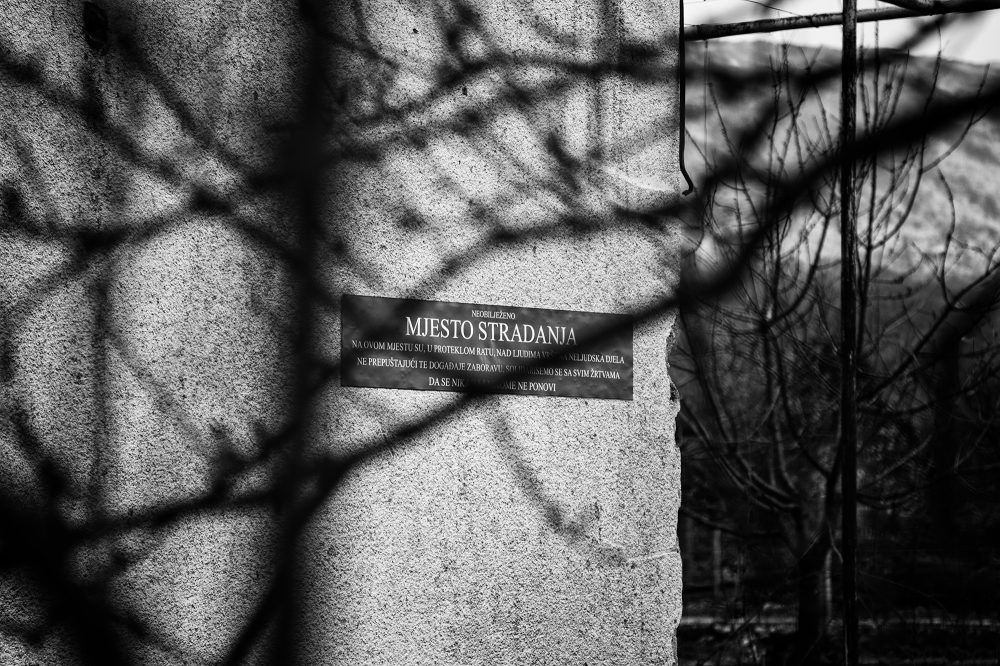At the beginning of December 2017, as part of our sixth round of marking unmarked sites of suffering, we marked sites of suffering in Goražde, Foča, Stolac and Mostar.

Marking unmarked sites of suffering aims to indicate the existence of these sites in our communities and to contribute to removing the taboos surrounding forgotten sites of suffering. To date, we have marked fifty such sites across BiH. There are cases where the sites of suffering of the majority population in a given region are unmarked. In the context of local communities, however, we are primarily dealing with sites of suffering of a population that has been left in the minority after the war and is cast as the “ancient enemy” in dominant narratives, whereby the memorialisation of victims becomes the exclusive prerogative of the “victors” and those in power in the community.
We think that the judgments by the Hague Tribunal (some of which we witnessed recently) and other war crimes courts are certainly significant for confronting the past and building peace. We also think that marking sites of suffering plays an extremely important role in the overall process of confronting a community with the burdens of an inherited past, building peace and reconciliation.
During this action, we marked buildings that were sites of imprisonment and execution from the 1992-1995 war—sports facilities, hospitals, factories and warehouses, homes and buildings for culture. Over time, some of these places have been returned to their original function, while others have been destroyed and abandoned.
In this most recent action we marked the village Crkvina by Goražde, where during the war eleven ethnic Serbs were taken (ten are still missing and the remains of one woman have been found). We also marked the “Partizan” sports facility in Foča which served as a prison for Bosniak women and girls in 1992. In the vicinity of Foča, we marked the former site of imprisonment Buk-Bijela, which served as a prison for Bosniak women, girls and older men, as well as the so-called “Karaman house” in Miljevina, which served as a concentration camp for Bosniak women and girls during 1992.
In Stolac we visited and marked the location of the Koštana hospital where Bosniak civilians and soldiers were imprisoned during the recent war. We decided to do this because the memorial plaque placed there by the Association of Concentration Camp Survivors of Stolac has been repeatedly removed and defiled. This is our way of expressing solidarity with the victims and sending a message that every site of suffering, no matter whose suffering is concerned, should be appropriately marked.

In Mostar, we marked the Heliodrom, part of the former JNA barracks in Rodoča, south of Mostar, that was used as a prison for Bosniaks from Mostar and the region during the 1992-1995 war. In the vicinity of Mostar, in Potoci, we marked the Elementary School that was used to imprison Croats from Mostar and, also in Potoci, we marked the site where three members of HVO were executed after being imprisoned and made to do forced labour, as well as the so-called “Skender house” which was a site of imprisonment for Croat soldiers and civilians from Mostar, in the period from June to December 1993. In Vojno, we marked the location of a former concentration camp for Bosniaks.
These locations, as well as many others that have not been marked yet, were not only sites of imprisonment but also sites of execution. The conditions were inhumane, with beatings, abuse, forced labour and executions occurring every day.
With this activity, we want to remove the taboos surrounding these sites and to encourage local residents to mark them in a fitting manner, thus paying tribute to the victims and expressing their regrets for lost lives and human suffering, which would be a step towards a fair relationship towards the past.
Our legitimacy for carrying out these activities comes from being citizens of a society where we want a better future, devoid of fear and injustice.